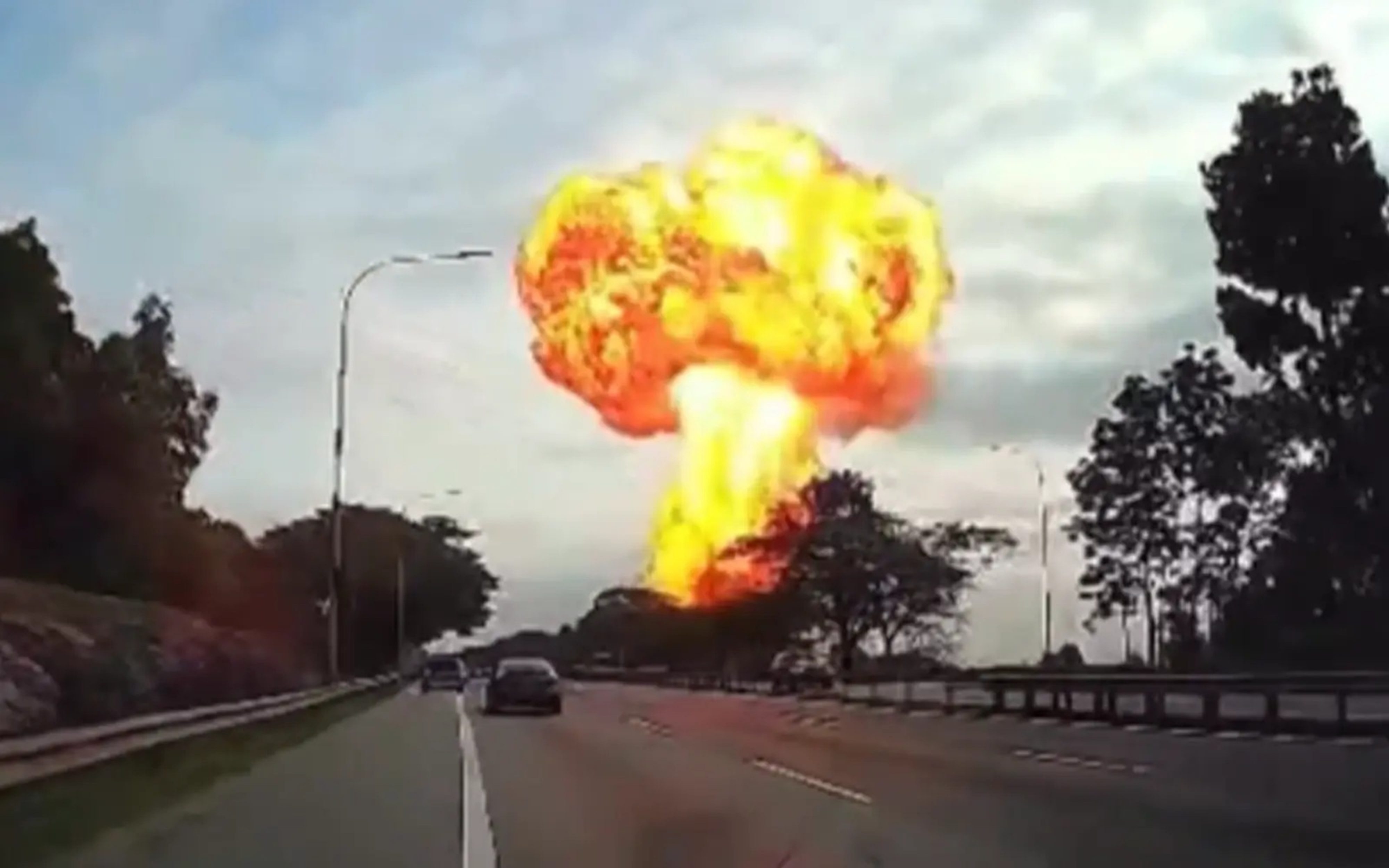On the morning of April 1, a public holiday, residents of Selangor’s Putra Heights, a gated
community, awoke to a thundering blast that shook their homes at 8:10 am, sending them
scurrying outdoors only to be greeted by huge flames and searing heat.
The fireball could be seen for miles, and some said at the height of the fire, flames reached 10
metres high.
Destruction was unprecedented, with local media reporting over 300 people injured, some
seriously, 70 houses and 10 shops were damaged, some up to 90 per cent, while others in varying
degrees of heat-related dilapidation.
Some 275 vehicles and about 50 motorcycles were destroyed in the fire that local media reported
was visible for six kilometres.
The fire is said to have started along a 500-metre stretch of a gas pipeline owned by national oil
company, Petronas.
To give one a scale of how big the fire was, the Fire and Rescue Department took some six-and-
a-half hours to put it out.
In all, there were 300 specialised firefighters from various agencies and a host of heavy-duty
equipment that ultimately quelled the inferno at about 3.45 pm, which started at 8.10 am.
Cause still unknown
Initial reports speculate that a gas leak occurred along a 500-metre stretch of the pipeline that
runs underground and roughly cuts the gated community into two areas.
It is a miracle that there have been no fatalities so far, given the scale and intensity of the fire.
Speculation is rife that the early morning inferno was caused by a leak in the pipeline, and
contractors carrying out excavation works triggered sparks that ignited the volatile gas that had
seeped out to the surface.
The Fire and Rescue Department director-general Nor Hisham Mohamad has said that
investigations are in their preliminary stages and it is too early to draw any conclusions.
Victims in shock, despair
Many of the victims who fled their homes, some dazed, others with burns and injuries, made their
way to a nearby Hindu temple and a surau and were given first aid by temple and surau officials
present.
Many are now homeless as the authorities have cordoned off 290 square metres until it is
determined safe to return.
But many, some of whose homes have been almost obliterated by the intense heat, are being
sheltered at two mosques.
In an immediate response, Prime Minister Anwar Ibrahim announced that RM2,500 relief will be
given to those whose homes have suffered partial damage and RM5,000 for those whose houses
are unliveable.
More aid is said to be on the way as both the Federal, State governments and Petronas discuss the
extent of the tragedy.
Safety Protocols ignored?
Gas pipelines are supposed to be constructed according to strict safety protocols and stringent
international standards.
Petronas, an international oil and gas conglomerate and a key sponsor in the F1 racing, is expected
to have gone beyond the benchmark standards in constructing oil and gas pipelines in a very
volatile industry.
Were industry standards met during the pipeline construction, which carried volatile gases, and
were maintenance carried out according to schedules? Most oil and gas pipelines have electronic
warning systems that trigger alarms when something goes amiss.
Were the safety systems in place themselves maintained and kept in good working order?
Another troubling matter is whether the gas pipeline was built after the residential units were
constructed or the developers came in after the pipes were laid.
City and town councils are supposed to monitor development as well as the proximity of such
works near dangerous and hazardous zones.
Who came first? Will there be conspicuous silence by everyone except the victims on what
and who was responsible for his cataclysmic tragedy?
The matter is too big to bury and has garnered international attention, and the truth will come out
in civil actions that are expected to be taken by the victims.

